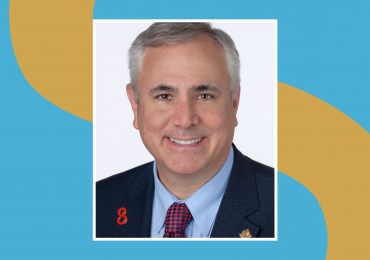Cavities and dental costs are at risk of skyrocketing as a growing number of states consider banning the use of fluoride in public water—and children from low-income households are likely most vulnerable.
In March, Utah became the first state to prohibit adding fluoride to drinking water. A couple months later, Florida followed suit. Several other states are now considering similar bills.
[time-brightcove not-tgx=”true”]
In a recent study published in JAMA Health Forum, researchers projected what would happen if the entire country were to stop adding fluoride to the water supply. The potential impact on both people’s oral health and their dental bills was substantial: Tooth decay, the study found, would increase by about 7.5%—representing about 25 million more cavities—and the U.S. would face about $9.8 billion in additional costs over five years, including both what families would have to pay out-of-pocket for dental care and what the government would need to pay for public health insurance.
And those impacts would disproportionately affect children on public insurance plans or without insurance, the researchers found.
Fluoridated water is “an amazing public health intervention that comes straight from the tap,” says the senior author of the study, Dr. Lisa Simon, an internal medicine physician at Brigham and Women’s Hospital, who is also a general dentist.
Read More: The Science Behind Fluoride in Drinking Water
“Fluoride works for everyone—it benefits adults, it benefits children,” Simon says. “But the people who derive the most benefit from it are people who have a harder time accessing routine dental care.”
“Unfortunately, in our country, that is more likely to be children and families who are low-income, who rely on public insurance, or who otherwise face challenges in getting to a dentist,” she says.
States’ moves to ban the use of fluoride in public drinking water come as the Trump Administration—due in large part to the influence of Robert F. Kennedy Jr., Secretary of the U.S. Department of Health and Human Services (HHS)—has pushed back against the practice. Kennedy has long blasted water fluoridation, claiming it is linked to arthritis, bone cancer, IQ loss, and more, and signaled that HHS will stop recommending it. The Environmental Protection Agency has said that it is studying the potential health risks of fluoride, and the Food and Drug Administration said it is taking steps to remove prescription ingestible fluoride supplements for children from the market.
Some research suggests that fluoride could be associated with lower IQ scores, but only at significantly high levels of exposure—the amount of fluoride that is added to public water, based on federal guidelines, is far lower.
And the majority of public health experts, pediatricians, and dentists insist that water fluoridation is a long-standing practice that is both safe and effective at protecting oral health and fighting cavities and tooth decay.
Read More: America’s Dental Health Is in Trouble
“It’s been touted to be one of the most successful or greatest public health initiatives, right up there with vaccinations,” says Dr. Tomitra Latimer, a pediatrician at Ann & Robert H. Lurie Children’s Hospital of Chicago.
U.S. localities started adding fluoride to public water in 1945, and the Centers for Disease Control and Prevention (CDC) has credited the public health initiative for the “dramatic decline in cavities” in the country in the years since. According to the CDC, drinking fluoridated water reduces cavities by roughly 25% in both children and adults.
Tooth decay, though preventable, is one of the most common childhood diseases. And children of color, children who come from low-income households, children on public insurance plans that limit which providers they can see, and children who live in rural areas and have to travel long distances to access care—all of them are at greater risk of developing cavities, according to Latimer. Children with autism also tend to have a heightened risk of developing cavities because they may struggle with brushing their teeth regularly, she says.
While there are alternative sources of fluoride that people can purchase, the cost may be out of reach for many families, Latimer says. That’s why, she says, fluoridated water is so critical: It’s an easily accessible tool that can help protect the oral health of children who are most vulnerable to cavities. And for generations, it’s flowed straight from the tap.
Leave a comment






